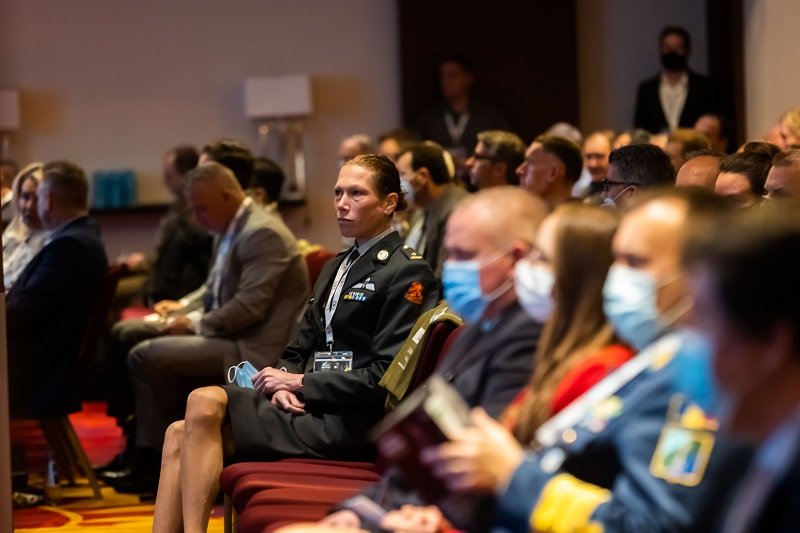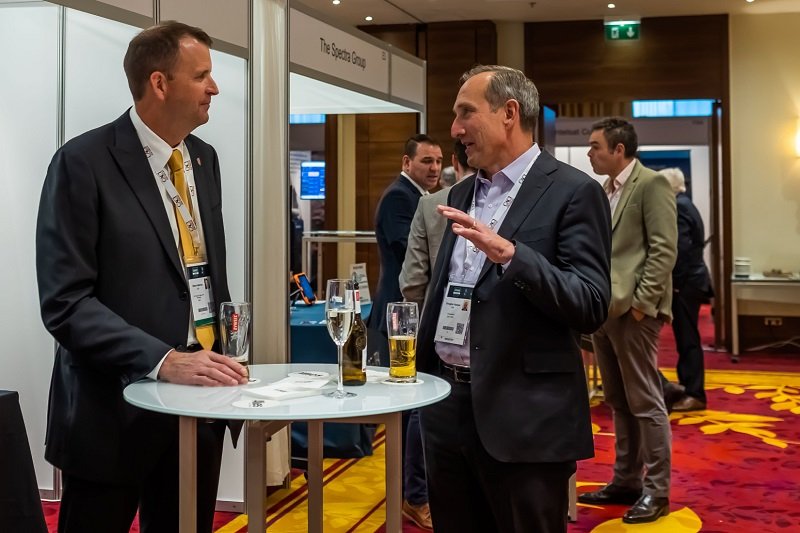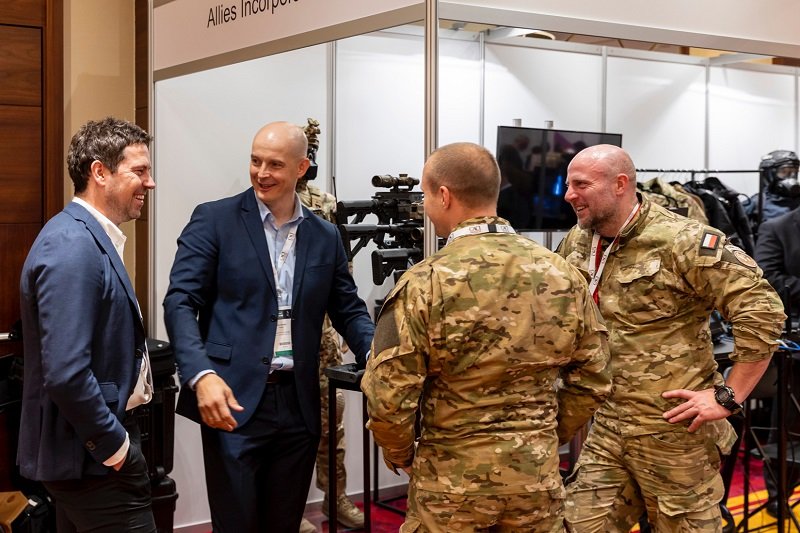GSOF Symposium Europe 2022: Doing business with SOF (Sponsored)
As listed in the 2022 Capabilities Catalogue, top of the HUNSOF’s list for the short-medium term are unmanned aviation systems (UAS), including Group 1 UAS, Automatic Identification Systems (AIS) and Ground Control Software (GCS); and manned aviation systems, including light, medium and heavy rotary wing aircraft and the equipment that enable and support these operations in the SOF operational envelope.
“The Capabilities Catalogue is a critical driver of technology prioritization for GSOF Europe, as it allows companies to manage their resources and channel funding into the right areas of development,” Dr Keenan Yoho, Vice President, Global SOF Foundation, said. “It begins with all our corporate partners listing their particular capabilities and then the host nation ranks the list by order of what they want to see and talk about at the event – sending out a clear message about what technology areas they are interested in.”

For organisations looking to engage with SOF customers, such guidance is critical. With defence budgets rising across Europe, spending on major platform procurement across the continent is expected to exceed $50 billion annually by 2025. Specifically, where to direct these acquisition dollars is being increasingly influenced by SOF, which have played a vital role in recent conflicts and will continue to do so during the age of great power competition. These forces need the best equipment to maintain full operational capabilities, but acquisition processes have been traditionally slow, and new methods of faster procurement are required, to enable more innovation and capability enhancement.
“Watching Ukraine is changing the way people are budgeting,” Yoho said. “The aircraft carriers, combat aircraft and tanks that have dominated acquisition budgets over the past 20 years are looking increasingly irrelevant in the era of precision strike and man-portable weapons systems.
“Today, militaries need to distribute their forces in smaller and more capable formations that are able to interoperate and communicate effectively. That means investing in drones and different types of intelligence capability rather than another combat aircraft – something particularly important for smaller nations whose budget just gets completely absorbed by the big ticket items that are prohibitively expensive to not just to buy, but to field and support.”
Beyond Hungary
Beyond the SOF-specific wish list of the HUNSOF, helicopter lift, expanded UAS portfolios, and SOF-specific armoured vehicles are all expected to be priorities for European militaries in the coming years. But it is important to keep the strategic view in the forefront, Yoho warns, when planning for the ‘joint piece’, which is relatively new.

“The first three nations to make the concept of a joint SOF command a reality are Denmark, the Netherlands and Belgium,” he explains. “And equipping it to project SOF power effectively will require those nations to develop joint capabilities from the outset, identifying areas of overlapping national interests and leveraging their joint buying power for assets such as strategic lift, ISR and even tactical lift. And from a business standpoint, centralizing contracting: the economics make more sense for companies to do recurring business with fewer, larger entities rather than lots of smaller ones.”
With other European nations likely to explore the idea of joining Denmark, the Netherlands and Belgium in the future, or creating their own joint SOC, the joint acquisition will also help enable the interoperability piece of the puzzle.
“That is everything from ‘my plug works in your socket’, to the tactics, techniques and procedures that allow nations to carry out effective joint operations,” Yoho said. “That includes training tactical operators jointly, equipping them with similar gear, and then at the staff level, planning an operation, integrating the intelligence and ISR, strategic and tactical lift, and being able to bring it all together – that’s the serious gameplay that we need to be thinking about right from the outset.”
Technological Innovation
It’s not just the brand-new technologies that are catching the eye of SOF acquisition programmes. Alongside cutting-edge sensors, systems and technologies, older technologies that have undergone form factor and function improvements are increasingly important. This is particularly the case for intelligence technologies such as satellite communications.
“Look at troposcatter, which is a very old technology that bounces RF of the troposphere: in the 1970-80s, the antenna was the size of a billboard, now it’s the size of a pelican case,” Yoho said. “It’s also very difficult to jam, and works in the high north where satellite coverage can be spotty – plus it’s much less expensive. So better capability does not always have to mean more budget.”
A major benefit for smaller innovative companies in doing business with SOF is the dynamic way in which they field new equipment. Typically, early adopters of new technology, SOF tend to acquire equipment much more quickly than the general force, and will continue to work with developers to fine-tune systems while it is being fielded. Not only does this provide a valuable feedback-development spiral for developers, it opens the door to smaller companies who are developing highly innovative equipment, but might not have the resources to engage in lengthy acquisition programmes.

While teaming may be the future for projecting SOF capability outside national borders across Europe, it also has an important role to play in the technology development side.
“What we love to see at GSOF is the B2B activity that takes place, where companies that have non-competing capabilities and technologies collaborate and put them together as a package to meet a requirement,” Yoho said. “Teaming is really a thread that can be followed through so much of what GSOF Europe aims to foster, right from technology development to acquisition and ultimately the way operations are carried out in theatre.
“Why is it so important? Because human rights, democracy and individual liberty are minority world views, and the ability to project the power to protect these rights is not something that a single nation – even with a very large budget – can carry out alone.”
Interested in finding out more about the requirements of the Hungarian Special Operations Forces? Submit your request for a snippet of the capabilities catalogue:
More from Defence Notes
-
![UK releases security strategy and plans for future defence spending boost]()
UK releases security strategy and plans for future defence spending boost
The UK’s National Security Strategy brings together the recently released Strategic Defence Review (SDR), Strategic Security Review, AUKUS Review and Industrial and Trade Strategies. At the same time, the UK made a commitment to reach defence spending of 5% of GDP by 2035 and Germany committed to 3.5% by 2029.
-
![Pentagon’s FY26 defence budget proposal is $130 billion more than US Congress plans to provide]()
Pentagon’s FY26 defence budget proposal is $130 billion more than US Congress plans to provide
The House Committee on Appropriations approved a FY2026 bill reducing investments in main defence programmes.
-
![What role could holographic and 3D capabilities play in the warfare of tomorrow]()
What role could holographic and 3D capabilities play in the warfare of tomorrow
Holographic and 3D technologies have been lauded by some for their ability to provide technical and operational advantages for military training and planning. But is the hype truly justified?
-
![Unfolding the Golden Dome for America: Seven things you should know about the programme]()
Unfolding the Golden Dome for America: Seven things you should know about the programme
Shephard talked to multiple experts about the most pressing concerns and considerations regarding the air defence system advocated by President Trump.
-
![Industry welcomes UK Strategic Defence Review, but pressure remains on future defence investment plans]()
Industry welcomes UK Strategic Defence Review, but pressure remains on future defence investment plans
While industry reception to the SDR has been positive, questions still remain from analyst and trade associations about what this could mean for future investment and the future UK Defence Industrial Strategy.
-
![UK Strategic Defence Review puts emphasis on autonomy, airpower and munitions]()
UK Strategic Defence Review puts emphasis on autonomy, airpower and munitions
The UK’s Strategic Defence Review (SDR) was launched as one of the first acts of the UK’s new Labour Government in June last year. The review has recommended a major big-picture reform of the country’s forces.


























